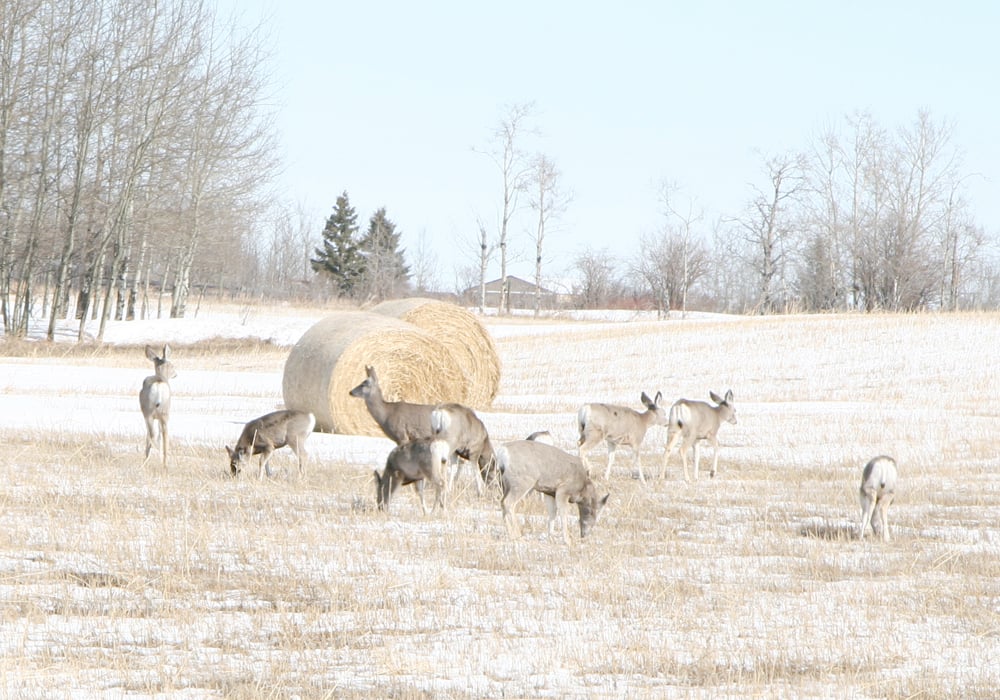Saskatchewan environment ministry says it’s too soon to know if the decline is because of the law or other factors
REGINA — Hunting licence sales for white-tailed and mule deer in Saskatchewan dropped after the province implemented its new trespass laws.
Joann Skilnick, director of wildlife for the environment ministry, said the decline after the Trespass to Property Act came into force Jan. 1, 2022, was the first in years.
“We recognize single year data is not conclusive and there may be confounding factors such as cost of living,” she told Agricultural Producers Association of Saskatchewan representatives gathered for their annual meeting earlier this month.
Read Also

Crop quality looks good this year across Prairies
Crop quality looks real good this year, with the exception of durum.
But the ministry will continue to monitor licence sales to see if the trend continues.
The law requires anyone seeking access to private and leased crown land, except community pastures, to get permission either written, electronic, verbal or through signage.
Skilnick showed a graph indicating that white-tailed deer licences dropped from slightly more than 5,000 to about 4,200, while mule deer licences, which had been steadily increasing since 2017, dropped to just slightly below 2,000.
The same graph said hunting seasons only work if hunters can access the animals.
In recent years, farmers and landowners have complained about burgeoning populations of deer, elk, moose and other species, and asked government for various measures to deal with them. Those include better wildlife damage compensation and more hunting opportunities.
Skilnick said the ministry has a 10-year overarching game management plan, as well as species management plans. So far, the plans for pronghorns and upland game birds have been published.
“The elk, moose, bear, and white-tailed deer plans are drafted and mule deer plans are under development,” she said.
Conservation is always the primary consideration when allocating a resource, she said, followed by First Nations and Metis rights holders, Saskatchewan residents, then licensed outfitters and non-residents.
The government manages hunting through regular and draw seasons, lengthening or shortening seasons, adding or reducing quotas, bag limits and hunting methods, Skilnick said.
Populations can undergo significant change during a year, especially during winter. Skilnick said animals will congregate where food is available and that congregation is not a good indicator of actual populations.
“They can give the appearance of an increasing wildlife population even when these populations have undergone declines,” she said.
The ministry predicted a decline in deer numbers after a couple of severe winters, especially in the boreal fringe. Skilnick said that seems to be coming to fruition, although in grassland regions the numbers are average.
This winter’s surveys will be in wildlife management zones 67 and 68, in the northwest, and focus on moose.
“If we have funds left over, we’ll probably do elk surveys in the adjacent area in zone 45,” she said.
Skilnick said conservation officers used to assist with congregation and depredation management but their role has changed to focus mainly on situations involving dangerous wildlife, such as a moose charging a child in a farmyard.
After the winter of 2022-23, which resulted in large congregations of big game, the environment ministry was asked to review its policy on special licences to deal with things like public safety, local overpopulations and disease control. Skilnick said a small working group is working on that review and details are being finalized.
“The main goals are to develop a standardized approach for identifying hot spot locations where an extended hunt may be necessary to address over population of big game that are threatening agricultural products,” she said.
It will also include a formal reporting mechanism and identify the conditions in which an extended hunt would be considered.
APAS representatives had questions about the prevalence of chronic wasting disease. It remains a concern, particularly in the South Saskatchewan River valley where it was first detected. Rates in mule deer there are as high as 75 percent. It is also more commonly detected in bucks than does.
















